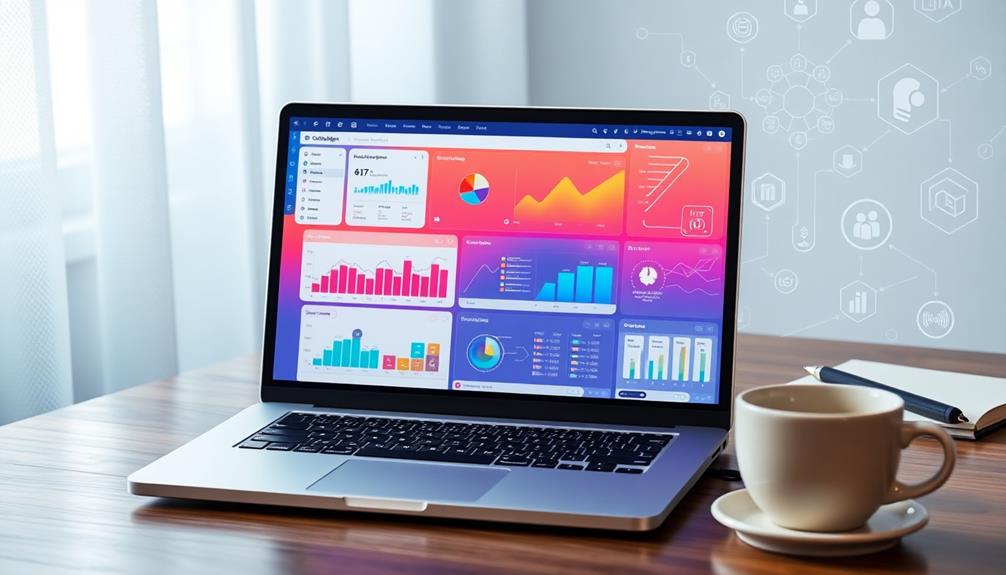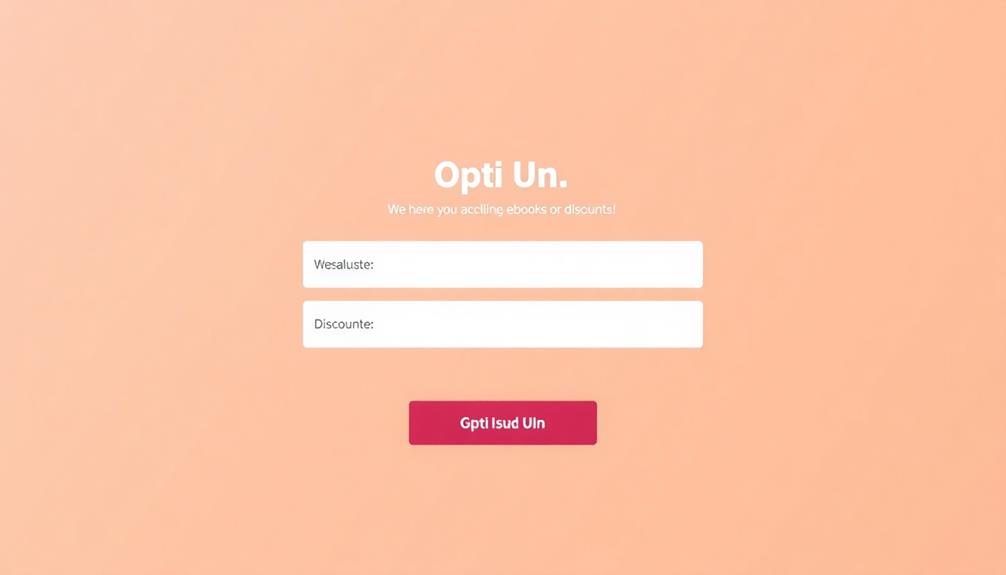To effectively use AI for your drip email campaigns, start by analyzing customer data and segmenting your audience for personalized messages. Leverage AI-driven tools to generate tailored content and automate email sequences based on user interactions. Optimize sending times by understanding when your audience is most engaged. Monitor key performance metrics to assess your campaigns, and make real-time adjustments for maximum impact. A/B testing helps refine your approach and boosts open and click rates considerably. By following these steps, you'll create more effective campaigns that resonate with your audience, setting the stage for even greater insights ahead.
Key Takeaways
- Analyze customer data to segment your audience and tailor content for higher engagement in drip email campaigns.
- Leverage AI-driven tools to automate email sequence creation and optimize audience targeting based on behavior.
- Personalize email content using AI insights to align with subscriber interests, boosting open and click-through rates.
- Implement A/B testing strategies powered by AI to refine email copy and sending times for maximum effectiveness.
- Continuously monitor performance metrics and make real-time adjustments to enhance engagement and campaign success.
Analyze Customer Data

Analyzing customer data is vital for crafting effective drip email campaigns. By collecting and interpreting information like demographics, purchase history, and engagement behavior, you can tailor your email content to meet your audience's needs.
Utilizing tools like Google Analytics helps you reveal insights about user interactions with previous email campaigns, allowing you to identify which segments respond best to specific messages.
Customer segmentation based on this data analysis enables you to create personalized email sequences that resonate with different audience groups. This tailored approach leads to higher open and click-through rates, driving engagement and conversions.
Implementing predictive analytics can further enhance your strategy by forecasting customer behavior and preferences. This way, you can send targeted emails that align with individual interests and their stages in the buyer's journey.
Regularly updating and cleansing your customer data is essential, too. It guarantees your email campaigns remain relevant and effective, reducing bounce rates and improving overall deliverability.
Identify Target Audience Segments

Identifying target audience segments is crucial for maximizing the effectiveness of your drip email campaigns. By understanding your audience, you can create personalized content that resonates with each segment, leading to higher engagement rates.
Additionally, recognizing the financial behaviors of your audience, such as their familiarity with credit card insights, can further enhance your campaign's relevance and impact.
To effectively segment your audience, consider these criteria:
- Geographic location: Tailor your message based on where your subscribers live.
- Purchase history: Understand past buying behavior to recommend relevant products.
- Engagement level: Identify how actively subscribers interact with your emails.
Utilizing tools like customer surveys and analytics software allows you to gather essential data on user interactions. This information helps you categorize audiences into specific target audience segments.
Remember, effective segmentation can increase your email open rates by up to 14% and boost click-through rates by 100%.
Moreover, leveraging AI-driven insights can facilitate automated segmentation, continuously adjusting to changes in subscriber behavior. This guarantees that your communication strategies remain optimized and relevant, enhancing the overall effectiveness of your drip email campaigns.
Embrace the power of segmentation to create a more impactful and engaging experience for your audience.
Leverage AI-Driven Tools
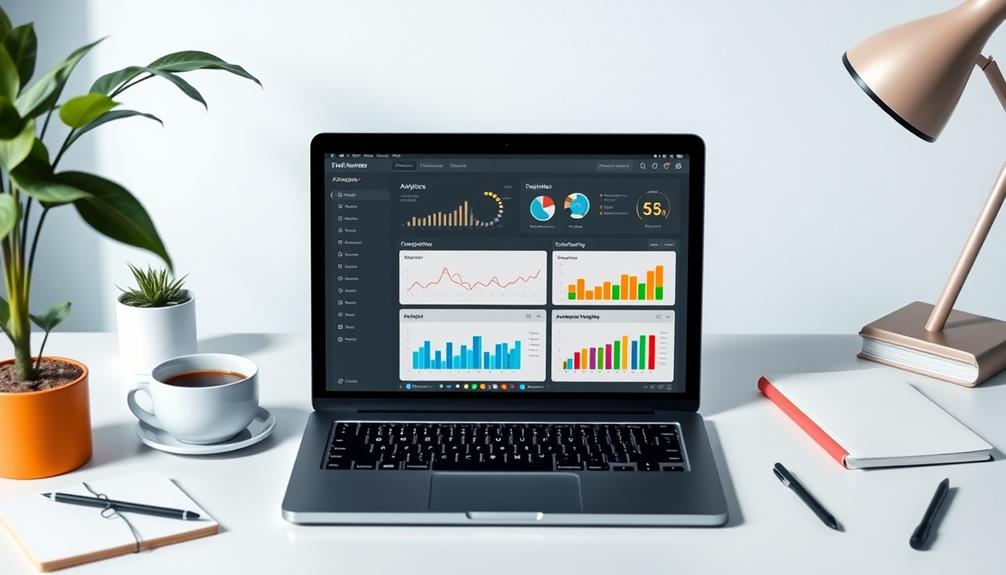
To enhance the effectiveness of your drip email campaigns, leveraging AI-driven tools can make a notable difference. These tools, like PromptMakers.ai, use advanced natural language processing to generate personalized email content that considerably boosts engagement rates.
By automating the segmentation of your audience based on their behavior, you can send targeted messages that resonate with specific subscriber interests, making your automated email marketing efforts more impactful. Additionally, employing a solid budgeting strategy can help allocate resources effectively for your marketing campaigns.
AI can also analyze past campaign performance metrics, providing valuable insights and recommendations for optimizing your future drip email sequences. This means you can continuously improve your strategy based on actual data, rather than guesswork.
Additionally, features like A/B testing powered by AI allow you to experiment with different subject lines and content variations, leading to improved open and click-through rates.
Furthermore, by automating the timing and delivery of emails based on user interactions, AI-driven tools help you maintain consistent communication, which is essential for effective lead nurturing.
With these tools at your disposal, you can elevate your drip email campaigns to new heights, ensuring you connect with your audience in meaningful ways.
Personalize Email Content
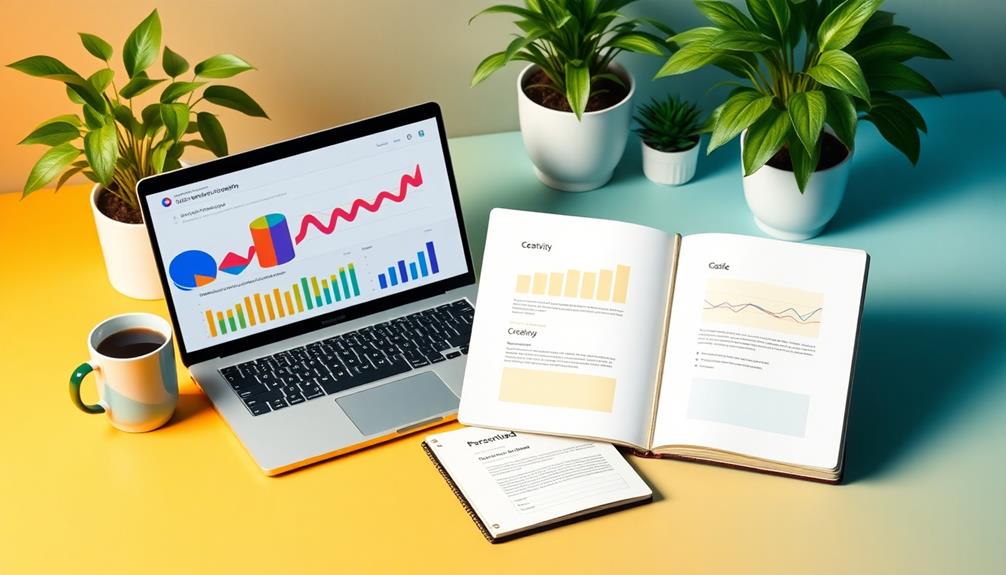
Personalized email content can notably enhance your drip campaigns, making them feel more engaging and relevant to each recipient.
By leveraging AI-driven tools, you can analyze subscriber behavior and preferences to craft emails that resonate deeply. This approach helps you connect with your audience on a more personal level, increasing the effectiveness of your email marketing campaigns.
Additionally, just as effective ORM solutions focus on improving brand perception, personalized emails can greatly boost your engagement rates.
Here are three key strategies for personalizing your email content:
- Dynamic Content Generation: Use natural language processing (NLP) to tailor subject lines and email body text based on user data. This can boost your open rates by over 20%.
- Personalized Recommendations: Incorporate AI-powered suggestions aligned with subscribers' interests and past interactions, which can lead to a 15% increase in click-through rates.
- Audience Segmentation: Utilize AI to segment your audience effectively, ensuring that your personalized messages reach the right groups for maximum relevance and engagement.
Automate Email Sequence Creation
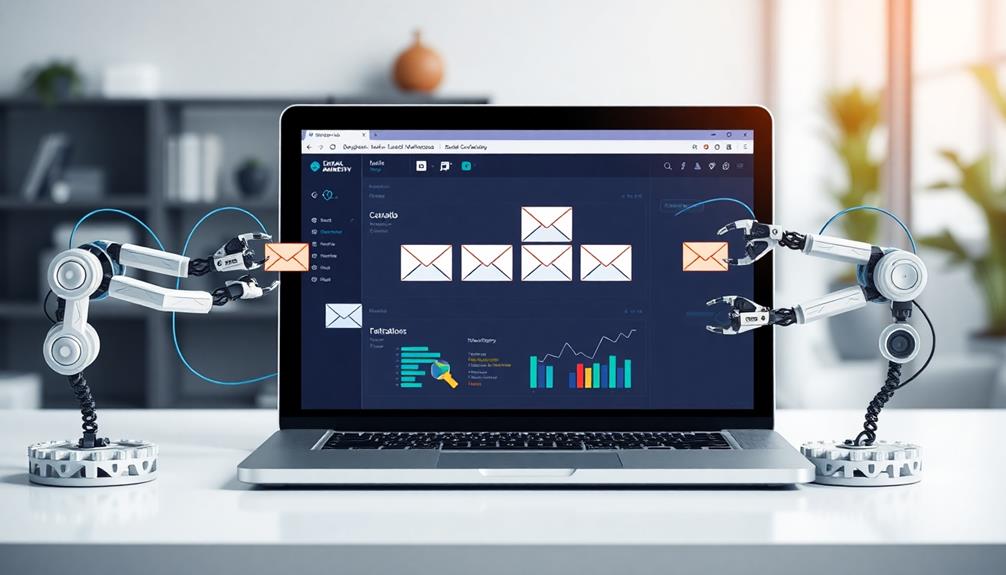
Creating effective email sequences can be time-consuming, but automating this process with AI tools makes it a breeze. By utilizing platforms like PromptMakers.ai, you can quickly generate personalized email content tailored to your subscribers' behavior and preferences. These tools offer pre-built sequence templates for various goals, enabling you to kickstart your drip marketing campaign effortlessly.
Here's how automation can streamline your email sequence creation:
| Feature | Benefits | AI Tools Example |
|---|---|---|
| Automated Emails | Saves time and guarantees consistency | PromptMakers.ai |
| Custom Triggers | Sends follow-ups based on interactions | Mailchimp, Sendinblue |
| AI-Driven Analytics | Monitors engagement metrics in real-time | Klaviyo, ActiveCampaign |
| Pre-built Templates | Speeds up campaign setup | HubSpot, GetResponse |
| Scheduling Emails | Guarantees ideal sending times | Constant Contact |
With custom triggers set within your AI platform, you can automatically send follow-up emails, enhancing the relevance and timing of your communications. This not only improves engagement but also allows you to adjust your email sequences based on AI-driven analytics, enhancing performance for your audience.
Optimize Sending Times

Maximizing engagement in your drip email campaigns hinges on optimizing sending times. By analyzing historical engagement data, you can pinpoint the days and times when your audience is most active, potentially increasing open rates by up to 20%.
Here are some effective strategies to optimize sending times:
- Utilize A/B testing: Experiment with various sending times and measure their impact on click-through rates. This helps refine your strategy based on real-time results.
- Leverage AI-driven analytics tools: These tools can predict the best sending times based on subscriber behavior, enhancing the chances of your emails being opened and read.
- Segment your audience by time zones: Sending emails at the most appropriate local times guarantees relevance, boosting engagement.
Don't forget to continuously monitor your engagement metrics. This allows for dynamic adjustments to your sending times, guaranteeing your email campaigns remain effective.
Monitor Performance Metrics

Monitoring performance metrics is essential for understanding the success of your drip email campaigns. By closely tracking metrics like open rates, click-through rates, and conversion rates, you can gauge your campaigns' effectiveness and pinpoint areas that need improvement.
Engagement metrics help you identify your best-performing emails, allowing you to adjust their content or timing to enhance overall effectiveness.
Implementing A/B testing is another powerful strategy. By experimenting with different subject lines and email content, you gain insights into subscriber preferences, which can refine your future email strategies based on solid performance data.
Utilizing analytics tools gives you real-time insights into subscriber behavior. This enables you to respond promptly to engagement trends and optimize your drip sequences as needed.
Regularly evaluating your performance metrics also helps you identify disengaged subscribers, allowing for effective list cleaning and improved targeting in future communications.
Make Real-Time Adjustments
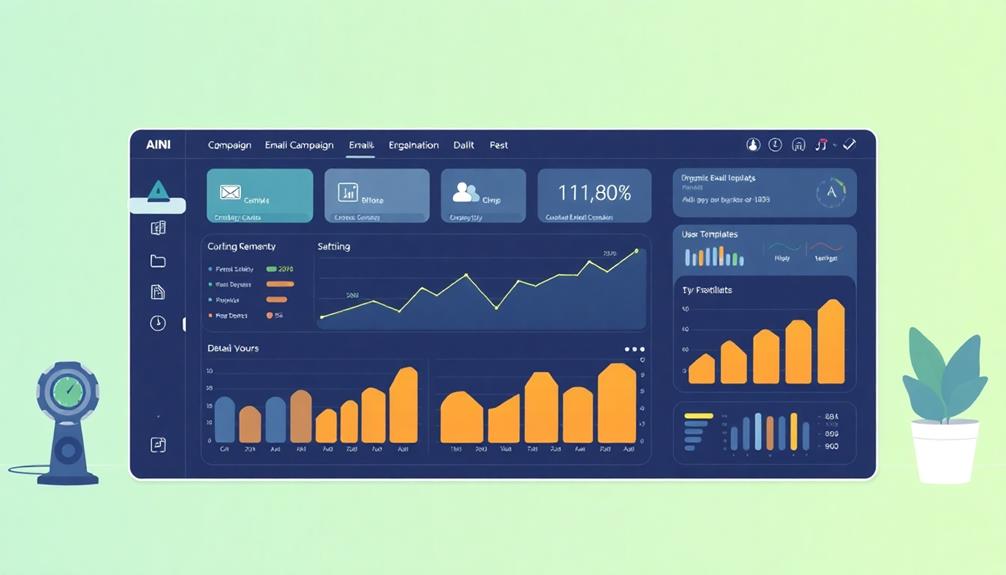
To maximize the impact of your drip email campaigns, you need to make real-time adjustments based on performance metrics.
By monitoring engagement metrics and employing A/B testing strategies, you can fine-tune your content and timing for better results.
Utilize AI tools to guarantee your messages resonate with subscribers and drive higher interaction rates.
Monitor Campaign Performance Metrics
Keeping an eye on your drip email campaign's performance metrics is essential for success. By regularly tracking key performance indicators (KPIs) like open rates, click-through rates, and conversion rates, you can assess how well each email performs.
Utilizing analytics tools helps you gain insights into subscriber behavior, allowing for real-time adjustments based on engagement metrics.
Here are a few strategies to enhance your monitoring efforts:
- A/B Testing: Experiment with different subject lines and call-to-action buttons to pinpoint what grabs your audience's attention.
- Automated Alerts: Set up notifications for any significant drops in engagement metrics, so you can intervene promptly and prevent further decline.
- Refine Audience Segmentation: Continuously tweak your audience segments based on performance data to keep your messaging relevant and aligned with subscriber interests.
Adjust Timing and Content
Adjusting the timing and content of your drip email campaigns can considerably enhance engagement and drive conversions. By utilizing AI-driven tools, you can analyze engagement metrics in real time, allowing for immediate adjustments based on how your subscribers interact with your emails.
Machine learning algorithms can predict best sending times for each individual, boosting your open rates by up to 20%.
Moreover, leveraging natural language processing enables you to personalize email content dynamically, guaranteeing your messages reflect the latest trends and resonate with subscriber preferences.
Setting up automated triggers lets you adjust email sequences based on real-time behavior. For instance, you can introduce delays for recipients who engage frequently, while moving faster for those who may need a little more encouragement.
Continuously monitoring performance analytics is essential for refining your content strategies. This way, you can adapt to changing engagement patterns and guarantee that your emails remain relevant and effective.
Implement A/B Testing Strategies
Implementing A/B testing strategies is crucial for optimizing your drip email campaigns. By sending two variations of your email to different segments of your audience, you can discover which version resonates more based on performance metrics like open rates and click-through rates. This process can lead to a staggering 49% increase in click rates, enhancing overall audience engagement.
To get started with A/B testing effectively, consider these key points:
- Test one variable at a time—focus on elements like subject lines, call-to-action buttons, or email layouts to pinpoint what drives results.
- Use analytics tools to monitor performance metrics in real time, so you can make quick adjustments to underperforming emails.
- Regularly implement A/B testing to refine your email copy and guarantee your content stays relevant and personalized.
Frequently Asked Questions
How to Use AI for Email Marketing?
To use AI for email marketing, you can analyze subscriber behavior, automate list segmentation, and generate engaging content. It'll help you improve open rates, optimize campaigns, and provide insights for better targeting and performance.
How Do I Create a Drip Email Campaign?
Did you know that personalized emails can deliver six times higher transaction rates? To create a drip email campaign, define your goals, segment your audience, and craft engaging emails that lead subscribers toward desired actions.
How to Create a Campaign in Instantly AI?
To create a campaign in Instantly AI, click on the Campaigns icon, select "Add Campaign," name it descriptively, choose a lead list, set up email sequences, adjust timing, and remember to save your progress.
How Many Emails Should Be in a Drip Campaign?
Think of your drip campaign like a well-tuned orchestra; aim for 5 to 7 emails to harmonize engagement and information. Each email should build on the last, guiding your audience smoothly toward conversion.
Conclusion
Incorporating AI into your drip email campaigns can dramatically enhance your outreach and engagement. For instance, imagine a retailer using AI to analyze customer purchase history, allowing them to send personalized product recommendations. By segmenting their audience and automating the email sequence, they saw a 30% increase in open rates and a 20% boost in sales. Embrace these eight steps, and you'll create compelling, effective campaigns that resonate with your audience and drive results.

